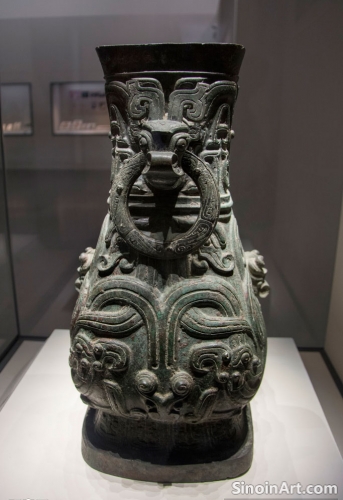The Production and Use of Bronze in Ancient Chinese Musical Instruments: Harmony and the Cosmos
|
Beyond the practical applications of bronze in tools and weapons, the use of this material in the creation of ancient Chinese musical instruments represents a remarkable convergence of technical skill, artistic innovation, and spiritual expression. Bronze instruments were not simply used to create music; they were also used as powerful tools for ritual and for connecting the world of humanity with the larger forces of the cosmos. The interplay between music and metalworking was a significant aspect of ancient Chinese life.  The precise casting and tuning of bronze bells, chimes, and drums allowed ancient musicians to create complex melodies, harmonies, and rhythms, which were often integrated into ritual and ceremonial events. The production of these complex instruments involved a high level of technical understanding and craftsmanship. The use of these instruments helped to enhance the experience of those in the ceremonies and rituals.  The tones and timbres produced by bronze instruments were often associated with specific cosmological principles, reflecting a belief in the connection between sound and the order of the universe. The sounds produced by these instruments were often believed to have a direct link to the celestial realms.  The use of bronze instruments in court and temple performances also helped to reinforce social hierarchies and to enhance the power and authority of rulers, highlighting the importance of music in the ancient Chinese worldview. The combination of music, ritual, and power was a key element in ancient Chinese social and political life. The study of bronze musical instruments offers valuable insights into the artistic skills, spiritual beliefs, and cultural practices of ancient China, demonstrating the interconnectedness of music, religion, and the power of bronze. The unique and distinctive sounds of the bronze instruments continue to resonate as powerful remnants of the ancient world. |
Tag : bronze musical instruments, Chinese music theory, ancient rituals, cosmos and sound, bianzhong
Related information
- The Symbolism in Chinese Bronze Ware: Decoding the Motifs and Patterns
- Bronze Ware and Ancient Chinese Communication Systems: Signals, Markers, and the Transmission of Information
- Bronze Ware and Ancient Chinese Concepts of the Afterlife: Journey, Protection, and Eternity
- The Production and Use of Bronze in the Ancient Kingdom of Shu: The Uniqueness of Sanxingdui
- The Significance of Jade Inlays on Bronze: Combining Materials and Symbolic Meanings
This article explores the symbolism in Chinese bronze ware, decoding the meaning of the taotie and other motifs, and demonstrating how these designs reflected the religious beliefs, social values, and worldview of ancient China.
This article explores the use of bronze in ancient Chinese communication systems, highlighting its role in creating signaling devices, markers, and other tools for transmitting messages, ensuring that both visual and auditory forms of communication were implemented across large distances.
This article explores the role of bronze ware in ancient Chinese funerary practices, highlighting the use of these objects to prepare the deceased for their journey into the afterlife, providing protection and ensuring their continued well-being in the spirit world.
This article explores the bronze ware of the ancient kingdom of Shu, highlighting the unique artifacts discovered at Sanxingdui, the distinct casting techniques, and the cultural significance of this powerful and largely independent civilization.
This article explores the significance of jade inlays on Chinese bronze ware, highlighting the symbolic meanings of both materials, the skill required for their combination, and the visual dialogue that is created between the bronze and the jade in these artworks.